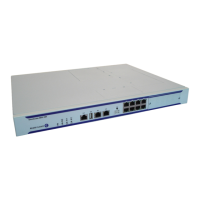VLL Service Configuration Commands
Page 246 7750 SR OS Services Guide
Parameters agg-rate — Defines the rate, in kilobits-per-second, that the maximum aggregate rate the queues on
the SAP or MSS can operate.
Values 1 — 40000000, max
qinq-mark-top-only
Syntax [no] qinq-mark-top-only
Context config>service>apipe>sap>egress
config>service>epipe>sap>egress
config>service>fpipe>sap>egress
Description When enabled (the encapsulation type of the access port where this SAP is defined as qinq), the qinq-
mark-top-only command specifies which P-bits to mark during packet egress. When disabled, both
set of P-bits are marked. When the enabled, only the P-bits in the top Q-tag are marked.
Default no qinq-mark-top-only
multi-service-site
Syntax multi-service-site customer-site-name
no multi-service-site
Context config>service>epipe>sap
config>service>apipe>sap
config>service>fpipe>sap
config>service>ipipe>sap
Description This command associates the SAP with a customer-site-name. If the specified customer-site-name
does not exist in the context of the service customer ID an error occurs and the command will not
execute. If customer-site-name exists, the current and future defined queues on the SAP (ingress and
egress) will attempt to use the scheduler hierarchies created within customer-site-name as parent
schedulers. See multi-service-site on page 82.
The no form of the command removes the SAP from any multi-service customer site the SAP belongs
to. Removing the site can cause existing or future queues to enter an orphaned state.
Default None
customer-site-name — The customer-site-name must exist in the context of the customer-id defined
as the service owner. If customer-site-name exists and local scheduler policies have not been
applied to the SAP, the current and future queues defined on the SAP will look for their parent
schedulers within the scheduler hierarchies defined on customer-site-name.
Values Any valid customer-site-name created within the context of the customer-id.

